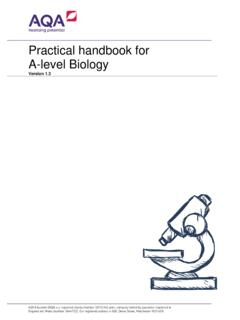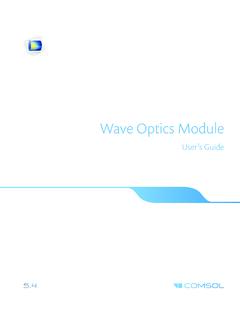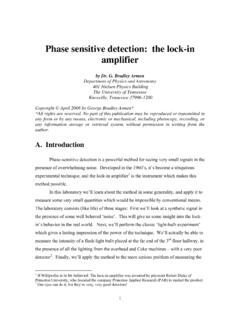Transcription of PRINCIPLES PRACTICE OF PHYSICS - Pearson
1 SECOND EDITION. PRINCIPLES & PRACTICE OF. PHYSICS . ERIC MAZUR. HARVARD UNIVERSITY. 1 25/01/20 12:22 PM. Please contact with any queries on this content Cover Image by Benjamin Lee / EyeEm / GettyImages Copyright 2021, 2015 by Pearson Education, Inc. or its affiliates, 221 River Street, Hobo- ken, NJ 07030. All Rights Reserved. Manufactured in the United States of America. This publication is protected by copyright, and permission should be obtained from the publisher prior to any prohibited reproduction, storage in a retrieval system, or transmission in any form or by any means, electronic, mechanical, photocopying, recording, or otherwise. For information regarding permissions, request forms, and the appropriate contacts within the Pearson Education Global Rights and Permissions department, please visit com/permissions/. Acknowledgments of third-party content appear on the appropriate page within the text or on page ix, which constitutes an extension of this copyright page. Pearson , ALWAYS LEARNING, and MYLAB are exclusive trademarks owned by Pearson Education, Inc.
2 Or its affiliates in the and/or other countries. Unless otherwise indicated herein, any third-party trademarks, logos, or icons that may appear in this work are the property of their respective owners, and any references to third- party trademarks, logos, icons, or other trade dress are for demonstrative or descriptive purposes only. Such references are not intended to imply any sponsorship, endorsement, authorization, or promotion of Pearson 's products by the owners of such marks, or any rela- tionship between the owner and Pearson Education, Inc., or its affiliates, authors, licensees, or distributors. Library of Congress Cataloging-in-Publication Data Names: Mazur, Eric, author. Title: PRINCIPLES & PRACTICE of PHYSICS / Eric Mazur, Harvard University. Other titles: PRINCIPLES and PRACTICE of PHYSICS Description: Second edition. | Boston : Pearson Education, Inc, [2021] |. Includes index. | Summary: "Introduction of PHYSICS with conservation laws, emphasis on the concept of systems, postponement of vectors, integration of modern PHYSICS and more"-- Provided by publisher.
3 Identifiers: LCCN 2019056836 | ISBN 9780135610862 (student edition) | ISBN. 9780136684879 (instructor's review edition) | ISBN 9780135611036. (loose-leaf print offer edition). Subjects: LCSH: PHYSICS --Textbooks. Classification: LCC .M39 2021 | DDC 530--dc23. LC record available at ScoutAutomatedPrintCode ISBN-10: 0-135-61088-5; ISBN-13: 978-0-135-61088-6 (Access Code Card). ISBN-10: 0-135-61086-9; ISBN-13: 978-0-13561086-2 (Rental). ISBN-10: 0-136-68487-4; ISBN-13: 978-0-13668487-9 (Instructor's Review Copy). 2 25/01/20 12:22 PM. Brief Contents Volume 1 of PRINCIPLES & PRACTICE of PHYSICS includes Chapters 1 21. Volume 2 of PRINCIPLES & PRACTICE of PHYSICS includes Chapters 22 34. CHAPTER 1 Foundations 1. CHAPTER 2 Motion in One Dimension 35. CHAPTER 3 Acceleration 68. CHAPTER 4 Momentum 98. CHAPTER 5 Energy 131. CHAPTER 6 Principle of Relativity 158. CHAPTER 7 Interactions 193. CHAPTER 8 Force 228. CHAPTER 9 Work 264. CHAPTER 10 Motion in a Plane 296. CHAPTER 11 Motion in a Circle 333.
4 CHAPTER 12 Torque 370. CHAPTER 13 Gravity 407. CHAPTER 14 Special Relativity 443. CHAPTER 15 Periodic Motion 486. CHAPTER 16 Waves in One Dimension 521. CHAPTER 17 Waves in Two and Three Dimensions 562. CHAPTER 18 Fluids 598. CHAPTER 19 Entropy 646. CHAPTER 20 Energy Transferred Thermally 683. CHAPTER 21 Degradation of Energy 724. CHAPTER 22 Electric Interactions 765. CHAPTER 23 The Electric Field 795. CHAPTER 24 Gauss's Law 827. CHAPTER 25 Work and Energy in Electrostatics 860. CHAPTER 26 Charge Separation and Storage 890. CHAPTER 27 Magnetic Interactions 923. CHAPTER 28 Magnetic Fields of Charged Particles in Motion 958. CHAPTER 29 Changing Magnetic Fields 993. CHAPTER 30 Changing Electric Fields 1024. CHAPTER 31 Electric Circuits 1061. CHAPTER 32 Electronics 1103. CHAPTER 33 Ray Optics 1146. CHAPTER 34 Wave and Particle Optics 1189. iii 3 25/01/20 12:22 PM. About the Author E. ric Mazur is the Balkanski Professor of PHYSICS and Applied PHYSICS at Harvard University, Area Chair of Applied PHYSICS , and a mem- ber of the faculty of Education at the Harvard Graduate School of Education.
5 Dr. Mazur is a renowned scientist and researcher in optical PHYSICS and in education research, and a sought-after author and speaker. Dr. Mazur joined the faculty at Harvard shortly after obtaining his at the University of Leiden in the Netherlands. He was awarded Honorary Doctorates from the cole Polytechnique and the University of Montreal, the Universidad Nacional Mayor de San Marcos in Lima, Peru, and the Katholieke Universiteit Leuven in Belgium. Dr. Mazur holds honorary professorships at the Institute of Semiconductor PHYSICS of the Chinese Academy of Sciences in Beijing, the Institute of Laser Engineering at the Beijing University of Technology, the Beijing Normal University, Sichuan University, and Nanjing University of Science and Technology. He is a Member of the Royal Academy of Sciences of the Netherlands and a Member of the Royal Holland Society of Sciences and Humanities. In 2014, Dr. Mazur became the inaugural recipient of the Minerva Prize, and in 2018 he received the inaugural International Flipped Learning Award from the American Academy of Learning Arts and Sciences.
6 Dr. Mazur has held appointments as Visiting Professor or Distinguished Lecturer at Carnegie Mellon University, the Ohio State University, the Pennsylvania State University, Princeton University, Vanderbilt University, Hong Kong University, the University of Leuven in Belgium, and National Taiwan University in Taiwan, among others. From 2015 2017 Dr. Mazur served as Vice-President, President-Elect, and President of the Optical Society. In addition to his work in optical PHYSICS , Dr. Mazur is interested in education, science policy, outreach, and the public perception of science. In 1990, he began developing Peer instruction, a method for teaching large lecture classes interactively. This teaching method has developed a large following, both nationally and internationally, and has been adopted across many science disciplines. Dr. Mazur is author or co-author of over 300 scientific publications and holds three dozen patents. He has also written on education and is the author of Peer Instruction: A User's Manual ( Pearson , 1997), a book that explains how to teach large lecture classes interactively.
7 In 2006, he helped produce the award-winning DVD Interactive Teaching. He is the co-founder of Learning Catalytics, a platform for promoting interactive problem solving in the classroom, and of Perusall, the first truly AI-driven social learning platform. iv 4 25/01/20 12:22 PM. To the Student Let me tell you a bit about myself. teaching helping others to see the beauty of the I always knew exactly what I wanted to do. It just universe is a wonderful combination. never worked out that way. When I started teaching, I did what all teachers When I was seven years old, my grandfather gave me did at the time: lecture. It took almost a decade to a book about astronomy. Growing up in the Nether- discover that my award-winning lecturing did for lands I became fascinated by the structure of the solar my students exactly what the courses I took in col- system, the Milky Way, the universe. I remember strug- lege had done for me: It turned the subject that I. gling with the concept of infinite space and asking end- was teaching into a collection of facts that my stu- less questions without getting satisfactory answers.
8 I dents memorized by rote. Instead of transmitting the developed an early passion for space and space explo- beauty of my field, I was essentially regurgitating ration. I knew I was going to be an astronomer. In high facts to my students. school I was good at PHYSICS , but when I entered uni- When I discovered that my students were not mas- versity and had to choose a major, I chose astronomy. tering even the most basic PRINCIPLES , I decided to com- It took only a few months for my romance with the pletely change my approach to teaching. Instead of heavens to unravel. Instead of teaching me about the lecturing, I asked students to read my lecture notes at mysteries and structure of the universe, astronomy had home, and then, in class, I taught by questioning by been reduced to a mind-numbing web of facts, from asking my students to reflect on concepts, discuss in declinations and right ascensions to semi-major axes pairs, and experience their own aha! moments. and eccentricities. Disillusioned about astronomy, Over the course of more than twenty years, the lec- I switched majors to PHYSICS .
9 PHYSICS initially turned ture notes have evolved into this book. Consider this out to be no better than astronomy, and I struggled book to be my best possible lecturing to you. But to remain engaged. I managed to make it through my instead of listening to me without having the opportu- courses, often by rote memorization, but the beauty of nity to reflect and think, this book will permit you to science eluded me. pause and think; to hopefully experience many aha! . It wasn't until doing research in graduate school that moments on your own. I rediscovered the beauty of science. I knew one thing I hope this book will help you develop the thinking for sure, though: I was never going to be an academic. skills that will make you successful in your career. And I was going to do something useful in my life. Just remember: your future may be and likely will be . before obtaining my doctorate, I lined up my dream very different from what you imagine. job working on the development of the compact disc, I welcome any feedback you have.
10 Feel free to send but I decided to spend one year doing postdoctoral me email or tweets. research first. I wrote this book for you. It was a long year. After my postdoc, I accepted a Eric Mazur junior faculty position and started teaching. That's @eric_mazur when I discovered that the combination of doing research uncovering the mysteries of the universe and Cambridge, MA. v 5 25/01/20 12:22 PM. To the Instructor As you may recall from the first edition of this book, Another point that has always bothered me is the the idea of using conservation PRINCIPLES derived from arbitrary division between modern and classical . a conversation with a dear friend and colleague, Albert PHYSICS . In most texts, the first thirty-odd chapters Altman, professor at the University of Massachu- present PHYSICS essentially as it was known at the end setts, Lowell, who asked me if I was familiar with the of the 19th century; modern PHYSICS gets tacked approach to PHYSICS taken by Ernst Mach. on at the end. There's no need for this separation.






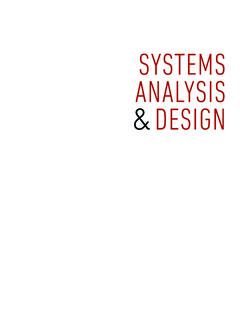

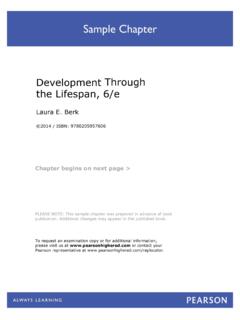

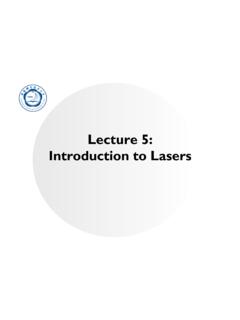
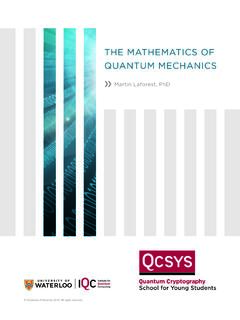
![arXiv:2203.06454v1 [physics.plasm-ph] 12 Mar 2022](/cache/preview/9/2/6/d/f/a/8/1/thumb-926dfa81e51e569016b61e30d7be9ca5.jpg)
